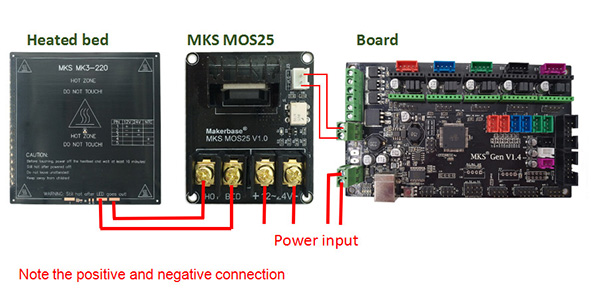GRUB (GRand Unified Bootloader)
BIOS will read the first sector of a storage device for a boot partition table.
MBR( master boot record) - 4 partitions
To boot mbr you need UEFI set to boot mode: Legacy BIOS.
For UEFI - you need a GPT partition table and a fat16/fat32 - mkfs.vfat partition anywhere on the disk with an EFI folder - 100mb for windows 200mb linux (has all drivers here).
Kernel 10mb + initramfs 75mb ~ 100mb + 30mb windows bcd.
Dont store kernel and initrd here, store them in /boot on the partition you install the linux os.
GPT (Globally Unique Identifier Partition Table) - 128 partitions
EFI partition - FAT16, FAT32 or VFAT
UEFI will look into
<EFI_SYSTEM_PARTITION>\EFI\
Will read folders from here - and display them in UEFI boot menu
Everyfolder must have a xxx.efi boot file
FIX Windows BOOT
The System Reserved partition is optional and is created by the windows setup for the BitLocker only as it stores un-encrypted data in order to decrypt and boot main partition
It also has the BCD (Boot Configuration Data) folder.
To avoid it press SHIFT+F10 at windows setup it opens a cmd :
diskpart
select disk 0
create partition primary
and continue with graphical setup.
Install a boot manager - boot windows install media, press SHIFT+F10 to open a CMD promt
diskpart
select disk 0
list volume
select volume 2 (pick the fat32 one)
assing letter k:
exit
Create a BCD store. - required to boot windows.
bcdboot c:\Windows /l en-GB /s K: /f ALL
Bcdboot.exe c:\windows /s c:
/s k: = install to k:
Grub doesnt see ext4 unknown filesystem --- remove metadata_csum
sudo dump2fs /dev/sda1 | head -20
install package e2fsprogs
sudo tune2fs -O ^metadata_csum /dev/sda1 -- remove
sudo tune2fs -O metadata_csum /dev/sda1 -- add
sudo e2fsck -f /dev/sda1
Edit grub on windows
open diskpark - type ar run or cmd
list volume
select volume 1
assign letter=z
You will get access denied efi partition windows when you try to access the partition.
Right click on start menu - and select PowerSheel (admin)
Type z: then use cd and ls to navigate
To edit grub.cfg type notepad grub.cfg at the proper path
remove letter=z in diskpart again to remove it from explorer
Install GRUB
mount /dev/xxx /mnt --- efi partition
--boot-directory=/mnt -- it will install under /mnt/grub - grub files
--efi-directory=/mnt -- it will install under /mnt/EFI/os_name (Microsoft/Debian/Ubuntu etc)
grub-install --boot-directory=/mnt/linux/boot --efi-directory=/mnt/linux/boot/efi --target=x86_64-efi
grub-mkconfig > /mnt/grub/grub.cfg
grub-update is equivalent to grub-mkconfig
grub-mkconfig -o /boot/efi/EFI/grub/grub.cfg
ls
grub> ls (hd1,gpt3)/
grub> set root=(hd0,1)
grub> linux /boot/vmlinuz-3.13.0-29-generic root=/dev/sda1
grub> initrd /boot/initrd.img-3.13.0-29-generic
grub> boot
optional (insmod part_gpt, insmod chain)
set root=(hd0,gpt1)
use tab after / or after each folder to explore contents - bootmgr is for bios, bootmgfw.efi for uefi.
chainloader /EFI/Microsoft/Boot/bootmgfw.efi
boot
Grub: no suitable video mode found boot in blind mode
insmod all_video
Edit grub.cfg :
insmod all_video
insmod part_gpt
insmod ext2
insmod gzio
insmod gfxterm
insmod gettext
font=unicode
set gfxmode=auto
set lang=en_US
set timeout=5
set menu_color_normal=cyan/blue
set menu_color_highlight=white/blue
# For booting Microsoft Windows
menuentry "Microsoft Windows 7" {
set root=(hd0,2)
chainloader +1
}
menuentry 'Debian' {
set root='hd0,gpt2'
echo 'Loading Linux ...'
linux /boot/vmlinuz-5.10.0-11-amd64 root=/dev/sda2 ro
echo 'Loading initial ramdisk ...'
initrd /boot/initrd.img-5.10.0-11-amd64
}
menuentry 'UEFI Firmware Settings' $menuentry_id_option 'uefi-firmware' {
fwsetup
}
Manual boot from GRUB menu
chainloader /efi/Microsoft/Boot/bootmgfw.efi
boot
iso images:
loopback lo (hd0,4)/image.iso
linux (lo)/artix/vmlinuz boot=casper iso-scan/filename=${isofile}
initrd (lo)/artix.initrd.gz
boot
ls - shows disks
ls (hd0,1)/ +tab = browse partitions
If you get to grub boot menu grub 0.x
root (hd0,0) --- this will mount the partition
kernel /boot/vmlinuz... root=/dev/sda1
initrd /boot/initrd....
boot
Grub 2
ls
set root=(hd0,msdos1)
linux /boot/vmlinuz... root=/dev/sda1
initrd /boot/initrd...
boot
Grub custom font
# Generate a GRUB-compatible font with specified size
# from a TTF (type-type font)
sudo grub-mkfont --output=/boot/grub/fonts/DejaVuSansMono36.pf2 --size=36 /usr/share/fonts/truetype/dejavu/DejaVuSansMono.ttf
Slow loading of linux from USB on old laptops
Grub calls the BIOS to read from the USB.
Some usb sticks are not compatible with bios drivers for high speed usb. Other sticks might work at faster speeds.
Grub uses bios driver to load vmlinuz and initramfs from usb and it is using USB 1.0 - it has a speed of around 1.5Mbps = 0.2MB/s. 75mb/0.2 = 375 = 5-10 min.
For old laptops / pcs:
The Plop Boot Manager is a small program to boot different operating systems.
The boot manager has a built-in ide cdrom and usb driver to access that hardware without the help/need of a bios.https://www.plop.at/en/bootmanager/intro.html



